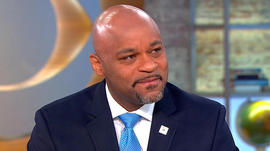Investors are going to be thirsty for the kind of returns to which they become accustomed now that the Federal Reserve is taking their “juice” away from them, market expert Jim Paulsen said.
Since the darkest days of the financial crisis, the Fed has been keeping interest rates low and making sure liquidity is flowing through the financial pipes thanks to the way the central bank has been managing its $4.5 trillion debt-laden balance sheet.
But as the Fed continues to raise rates and starts shrinking its bond portfolio, investors in both stocks and bonds face a different world.
“This bull market has been driven by several persistent themes including chronic investor fear, disinflation, falling yields, Fed accommodation, and yes, Juice!” Paulsen, chief investment strategist at the Leuthold Group, wrote in a note to clients. “The pillars of this bull market are waning and the sand under investors’ feet is shifting.”
The tone of his remarks is notable because Paulsen over the years has been a reliable bull who has advocated for stocks even when the market appeared shaky.
However, he has turned cautious lately as the Fed has indicated it is determined to begin rolling back some of the highly accommodative policy moves it has taken since the crisis.
“As financial markets are weaned off the juice they have been drinking for almost a decade, investors should prepare for a very different bull market in the balance of this recovery,” he said. “Without a chronic injection of financial liquidity, the stock market may struggle more frequently, overall returns are likely to be far lower, and bond yields may customarily rise.”
Paulsen’s remarks come amid a split in market sentiment: The latest Yale School of Management survey shows individual investors at their least optimistic point in the history of the survey, going back to 1989, while institutional investors also are losing confidence and at their lowest level of bullishness since late-2016.

To be sure, Paulsen is not predicting a market collapse. Instead, he suggests investors will need to shift strategy away from the cyclical U.S.-centric approach that has worked for most of the past 8½ years, due to the likely contraction of money supply compared to nominal GDP growth.
That means value over growth stocks, international over domestic, and inflationary sectors, like energy, materials and industrials, over disinflationary groups like telecom and utilities.
Paulsen points out that growth in the money supply has decelerated from 8 percent at the start of 2016 to 4.6 percent over the past six months. Declines in financial liquidity have coincided with just a 4.3 percent gain in the S&P 500 since 1959, while increases have pushed the index higher an average 12 percent, he said.
“The U.S. economy has returned to full employment, wage inflation has turned higher, global economic activity has synchronized, and the Federal Reserve is tightening monetary conditions,” he said. “If the juice runs out, history suggests stock market returns could decline by two-thirds!”
WATCH: Art Cashin of UBS looks at the stock market’s lackluster recent performance.

